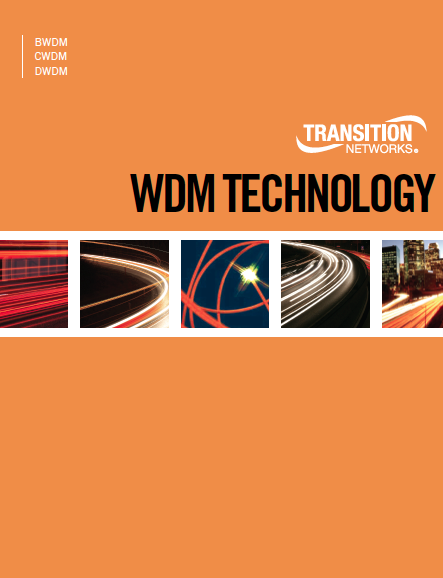Users of today's data, voice, and video networks are creating more and more complex demands, requiring more bandwidth and faster transmission rates over longer distances than ever before. To meet these demands, network managers rely on fiber optics. The reality is, many providers, enterprise corporations and government entities have exhausted the available fiber infrastructure. In these cases, what happens next? In this excerpt from Transition Networks, we delve into Wave Division Multiplexing technologies.
 "Many groups are turning to Wave Division Multiplexing (WDM) technologies in order to increase capacity on the existing fiber infrastructure. WDM is a technology which multiplexes multiple optical signals onto a single fiber by using different wavelengths, or colors, of light. By utilizing WDM communication methods network managers can realize a multiplication effect in their available fiber’s capacity.
"Many groups are turning to Wave Division Multiplexing (WDM) technologies in order to increase capacity on the existing fiber infrastructure. WDM is a technology which multiplexes multiple optical signals onto a single fiber by using different wavelengths, or colors, of light. By utilizing WDM communication methods network managers can realize a multiplication effect in their available fiber’s capacity.
A quick study of WDM yields three options: Bi-Directional Wave Division Multiplexing (BWDM), Coarse Wave Division Multiplexing (CWDM), and Dense Wave Division Multiplexing (DWDM). This article will take a look at the benefits and drawbacks of all three, as well as provide estimated cost comparisons of each technology type."
Learn more in this PDF from Transition Networks by downloading today!
About Transition Networks
Transition Networks, Inc. offers a full suite of fiber networking products that enable you to deliver and manage your network traffic reliably over fiber optics. The Transition Networks brand of media converters makes conversion between disparate media types possible, helping companies leverage their existing network infrastructure. In the fall of 2005, Communication Systems, Inc. announced the integration of MILAN Technologies into Transition Networks. This integration expanded the Transition Networks product portfolio to include a complete line of multilayer switches. Partner with Transition Networks and Accu-Tech to find the high-performance solutions that provide for your needs both today, and in the future.
Transition In the Data Center
As data centers grow to accommodate more mission-critical data and functions, an influx of moves, adds and changes is exhausting available real estate. Cable congestion for equipment and racks, as well as the cable trays and pathways used for all the cable connections between copper devices creates havoc that hinders performance.
Cable tray congestion compromises troubleshooting and expansion. Transition Networks offers flexible, easy-to-manage solutions to maximize the capabilities of existing cable infrastructure while improving performance and reliability. Structured cable distribution with centralized patching enables reconfigurations in an identifiable distribution area for superior scalability into the future.
Contact us today for more information!


.png?width=58&height=58&name=X_logo_2023_(white).png)
